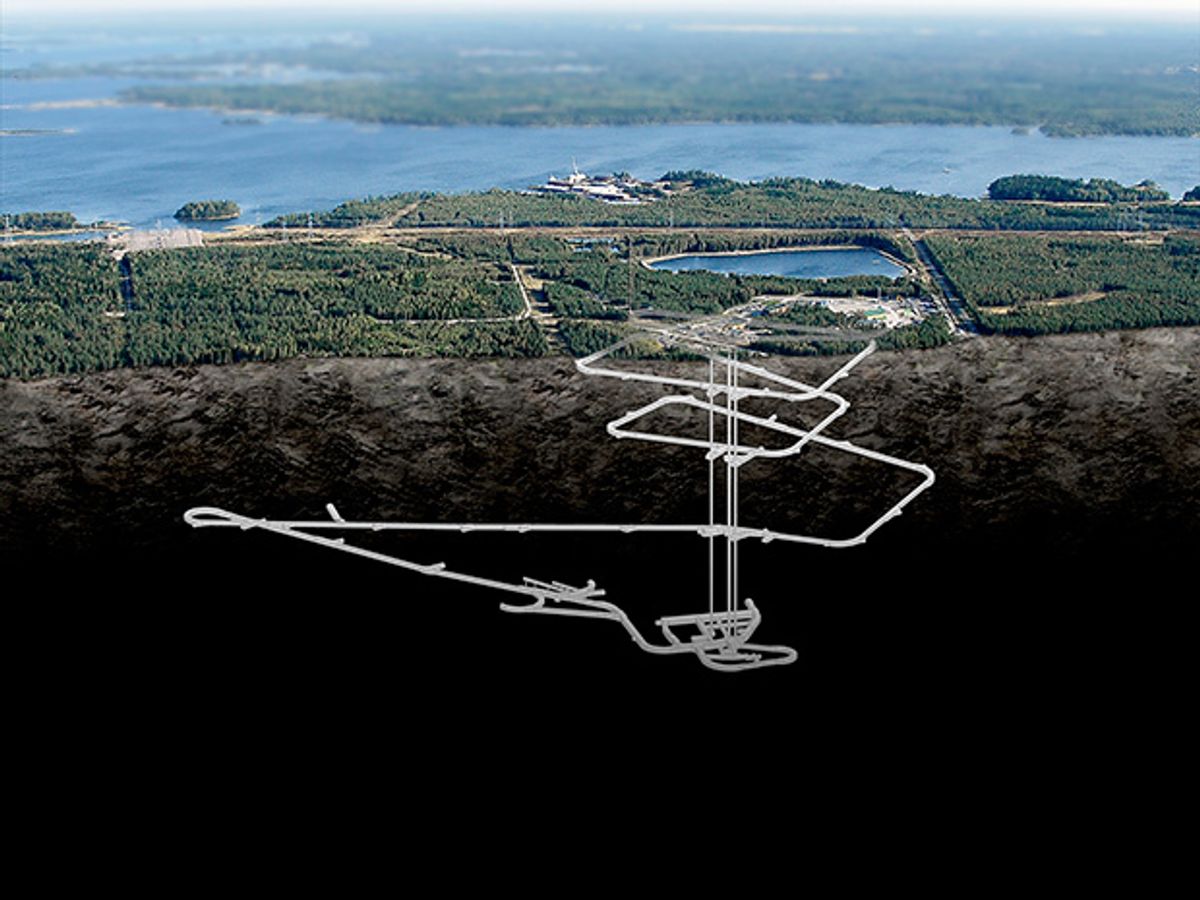Finland’s government issued a construction license to nuclear disposal consortium Posiva last week, Reuters reported. The license gives the group approval to build a storage facility on Olkiluoto Island, Finland, designed to last 100,000 years.
The facility would be the first of its kind in the world. Since the beginning of the nuclear power age, energy firms have paid to store nuclear waste in temporary holding ponds unlikely to last more than a couple of centuries. The Posiva facility, decades in the planning, may pioneer a more sustainable era of disposal. (See “Finland’s Nuclear Waste Solution,”IEEE Spectrum, December 2009.)
Nuclear waste consists of metal rods composed mostly of uranium with a molecular weight of 238. Over time, the depleted uranium atoms release radioactive particles—a process called decay—that converts the uranium into lighter elements. Over billions of years, those atoms decay, too. By the end, all that is left is lead.
In the (long) meantime, however, the radioactive material can contaminate its surroundings, and therefore requires costly management. The United States and other nuclear-powered countries have thus far proven unable to agree on where to store their half-century’s worth of accumulated nuclear waste. An earthquake, volcanic activity, or even a slow leak of water could disrupt the temporary facilities in which the waste now sits.
To provide safer and more permanent storage, Posiva proposes to bury electrically-welded iron-and-copper capsules 400 meters underground. The capsules would be surrounded by clay barriers and capped with rubble and cement. The facility, which would have a 6,500 metric ton capacity, could likely hold Finland and Sweden's projected future nuclear waste. But that capacity doesn’t come close to the volume required by larger nations such as the United States, which has over 70,000 metric tons of waste piled up, and produces an additional 2,200 tons a year.
Though tunneling has been going on for over a decade, Posiva had to wait for the Finnish government to approve its 2012 construction permit application before it could begin the trickier task of loading radioactive waste into its metal coffins. That task may begin as soon as 2023, continue for up to a century, and end when operators fill in the access tunnels with rubble and cap them off with cement. Posiva estimates that installation and operating costs for the first century will be around €3 billion (US $3.21 billion).
Lucas Laursen is a journalist covering global development by way of science and technology. An IEEE Spectrum Contributing Editor, he has lived in and reported from the United States, United Kingdom, Switzerland, Mexico and Spain.



